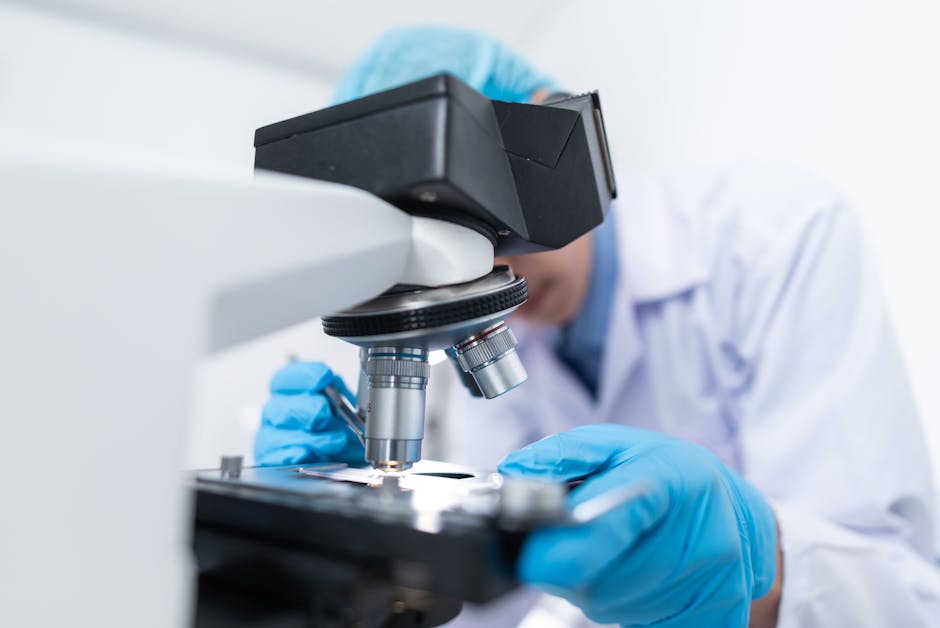Menopause marks a significant milestone in a woman’s life, signaling the end of menstrual cycles and the natural decline of reproductive hormones. As this transition unfolds, many women experience symptoms that can affect their quality of life, ranging from hot flashes and night sweats to mood changes and sleep disturbances. Hormone therapy, also known as hormone replacement therapy (HRT), is often utilized to alleviate these menopausal symptoms by replenishing the body with estrogen and, in some cases, progesterone.
What hormone therapy is used for menopause primarily hinges on its ability to mitigate the most distressing symptoms and prevent long-term health issues associated with estrogen deficiency, such as osteoporosis. However, the decision to pursue hormone therapy is deeply personal and should be made in consultation with a healthcare provider, considering individual health history and risks.
According to Jonna, a women’s psychotherapy specialist, “Menopause can be a hard time for many women, affecting both their physical and mental health. It’s important to try to tackle the problem from every end.”
As you navigate through the complexities of menopause, staying informed is crucial. Subscribe for more! Our content provides a deep dive into the various aspects of hormone therapy, including the benefits, potential risks, and alternative treatment options, helping you make an empowered decision about your health.
Hormone Replacement Therapy: Types and Mechanisms

Hormone Replacement Therapy (HRT) comes in various forms, each designed to address the hormonal imbalances brought on by menopause. The two primary types of HRT are estrogen-only therapy (ET) and combined hormone therapy (CHT), which includes both estrogen and progestogen. ET is typically prescribed for women who have had a hysterectomy, whereas CHT is recommended for those with an intact uterus, to reduce the risk of endometrial cancer associated with estrogen alone.
The mechanisms behind HRT are rooted in its ability to replace hormones that the body no longer produces after menopause. Estrogen therapy can help alleviate a wide range of symptoms, such as hot flashes, by compensating for the lower hormone levels. Progestogen is added in CHT to counterbalance estrogen’s effects on the uterine lining. This combination is crucial for preventing the potential thickening of the lining, which can lead to cancer if left unchecked.
Delivery methods for HRT vary, including oral tablets, transdermal patches, vaginal creams, gels, and rings. Each method has its own set of benefits and drawbacks, with factors like convenience, absorption rates, and personal preference playing a role in the choice of treatment. Transdermal patches, for instance, offer a steady hormone release and are often a good choice for women who may have difficulty with oral medications due to digestive issues or a history of blood clots.
Estrogen Therapy: A Primary Treatment for Menopause Symptoms

Estrogen therapy remains the cornerstone treatment for relieving menopausal symptoms, particularly for those who experience moderate to severe hot flashes, night sweats, and vaginal dryness. The introduction of estrogen into the body helps stabilize the hormone fluctuations that occur during menopause, thereby reducing the frequency and intensity of these discomforting symptoms. By replenishing estrogen levels, women can also see an improvement in urogenital health, as estrogen promotes the health of vaginal tissue and urinary function.
Moreover, estrogen therapy contributes to bone density preservation, which is a significant concern for postmenopausal women at risk of osteoporosis. Estrogen plays a vital role in the maintenance of bone mass, and its supplementation can help prevent the rapid bone loss that often accompanies the postmenopausal period. This protective effect, however, must be weighed against potential risks, such as an increased chance of blood clots and strokes when taken orally. Hence, healthcare providers carefully evaluate individual risk factors before recommending this therapy.
It’s important to note that estrogen therapy is not a one-size-fits-all treatment. Dosages and treatment durations are tailored to each woman’s symptoms and overall health profile. Regular follow-ups with healthcare providers ensure that the therapy continues to be effective and safe, with adjustments made as necessary. Women considering estrogen therapy should engage in an open dialogue with their healthcare professionals to discuss the benefits and potential risks associated with this form of treatment.
Progesterone and Combination Therapies: Balancing the Effects

When it comes to hormone replacement therapy (HRT) for menopause, balancing the body’s hormonal environment is crucial. Progesterone, or progestin in its synthetic form, is often prescribed alongside estrogen to women with an intact uterus. This is because estrogen therapy alone can increase the risk of endometrial cancer. Progesterone counteracts this risk by causing the endometrium to shed similarly to a menstrual period, thereby reducing the chance of cancerous growths.
Combination therapies that include both estrogen and progesterone can provide the full spectrum of menopause symptom relief while maintaining uterine health. These therapies are known to effectively manage hot flashes, night sweats, and vaginal symptoms, while also offering the bone-protective benefits of estrogen. Combination hormone therapy is typically administered through various delivery methods such as pills, patches, gels, and intrauterine devices, allowing for personalized treatment plans based on individual needs and preferences.
However, it is essential to understand that hormone therapy is not without its risks. Studies have suggested that combination therapies might be associated with a slightly increased risk of breast cancer and cardiovascular events. Therefore, the lowest effective dose for the shortest period necessary is the general guideline followed by healthcare providers. Women should undergo regular assessments to ensure that the benefits of combination HRT continue to outweigh the risks.
For women who cannot take estrogen, other medications and non-hormonal treatments are available to manage menopause symptoms. These alternatives may include selective serotonin reuptake inhibitors (SSRIs), gabapentin, or lifestyle modifications such as diet and exercise. As with any medical treatment, a thorough conversation with a healthcare provider is vital to make an informed decision tailored to one’s health history and symptom profile.
Navigating the Risks and Benefits of Menopause Hormone Therapy
Menopause hormone therapy (MHT), once started, is not a decision to be taken lightly. Its benefits are indeed compelling, offering relief from the uncomfortable symptoms of menopause, such as hot flashes, sleep disturbances, and vaginal dryness. Additionally, MHT has been shown to prevent bone loss and reduce the risk of osteoporosis-related fractures in postmenopausal women.
However, the risks associated with MHT cannot be ignored. Research, including findings from the Women’s Health Initiative, has highlighted potential dangers such as an increased risk of breast cancer, blood clots, heart disease, and stroke, particularly in older women or those who begin hormone therapy more than 10 years after menopause. It is crucial to weigh these risks against the benefits on an individual basis, considering factors like age, health history, and personal risk of conditions such as heart disease, cancer, and osteoporosis.
To navigate this complex decision, healthcare providers often recommend lifestyle changes and alternative treatments as the first line of defense against menopause symptoms. If MHT is deemed appropriate, they generally prescribe the lowest dose for the shortest duration necessary to manage symptoms, with regular reviews to assess the continued need for the therapy. Women with a history of certain cancers, blood clots, or liver disease may not be suitable candidates for MHT and should discuss alternative options with their healthcare provider.
Ultimately, the decision to use hormone therapy during menopause is highly personal and should be made after careful consideration of all risks and benefits. It is imperative for women to engage in open and ongoing dialogue with their healthcare providers to determine the most appropriate and safe approach for their unique situation. A tailored, individualized plan is the best way to ensure optimal health and quality of life during the menopausal transition and beyond.
Alternative Treatments to Hormone Therapy for Menopause Relief

While hormone therapy remains a viable option for many, a significant number of women seek alternative treatments for menopause relief due to the associated risks or personal preferences. Natural remedies and lifestyle modifications can play a pivotal role in managing symptoms. Dietary changes, such as increasing the intake of phytoestrogens found in soy products, can mimic the effects of estrogen in the body, providing some relief from hot flashes and night sweats.
Regular physical activity is also highly recommended, as it can improve mood, weight management, and overall health, which may alleviate menopausal symptoms. Mind-body practices like yoga, tai chi, and meditation have been shown to reduce stress and improve the quality of life for menopausal women.
Herbal supplements, such as black cohosh, red clover, and evening primrose oil, are often touted for menopause symptom management, but it’s essential to approach these with caution. The efficacy and safety of such supplements can vary, and they are not regulated by the Food and Drug Administration (FDA) with the same rigor as medications. Consulting with a healthcare provider before trying any supplement is critical.
Non-hormonal pharmaceuticals, including certain antidepressants, may offer symptom relief as well. These medications can particularly help with mood swings and hot flashes. Acupuncture is another alternative treatment that some women find helpful for managing various menopause symptoms.
For those interested in learning more about managing menopause symptoms and exploring the full spectrum of treatments available, including both conventional and alternative approaches, staying informed is key. Subscribe for more! information and updates from Prolong, where we commit to guiding you through the intricacies of menopause with expertise and care.





Leave a reply